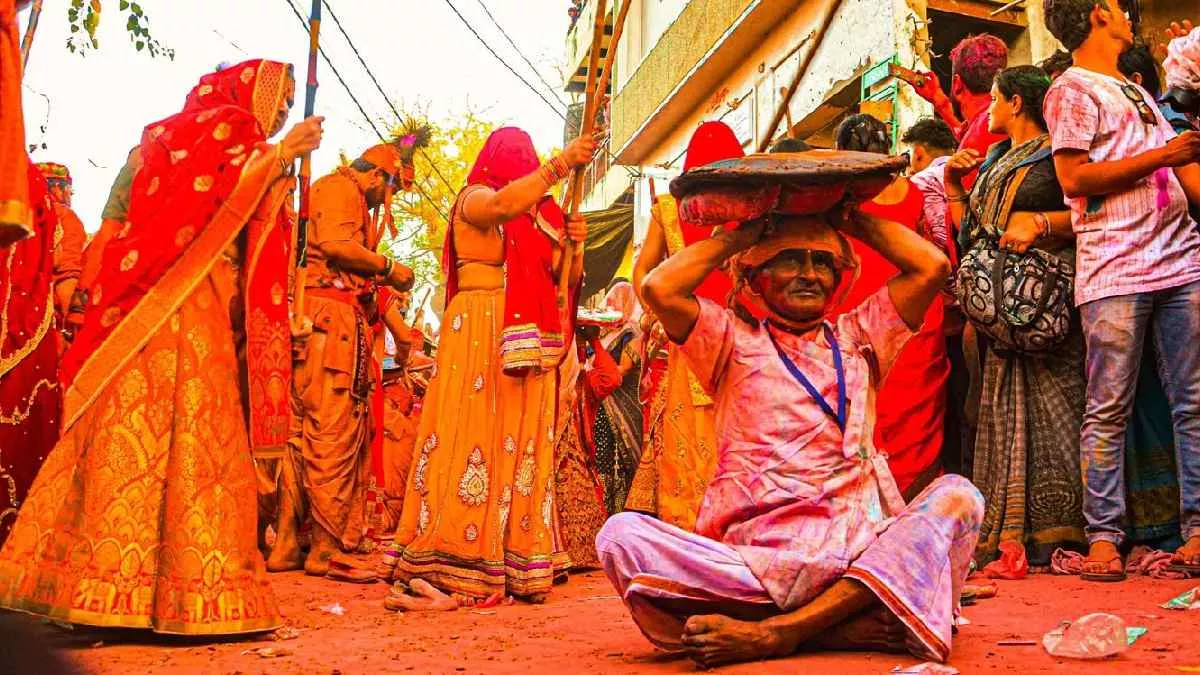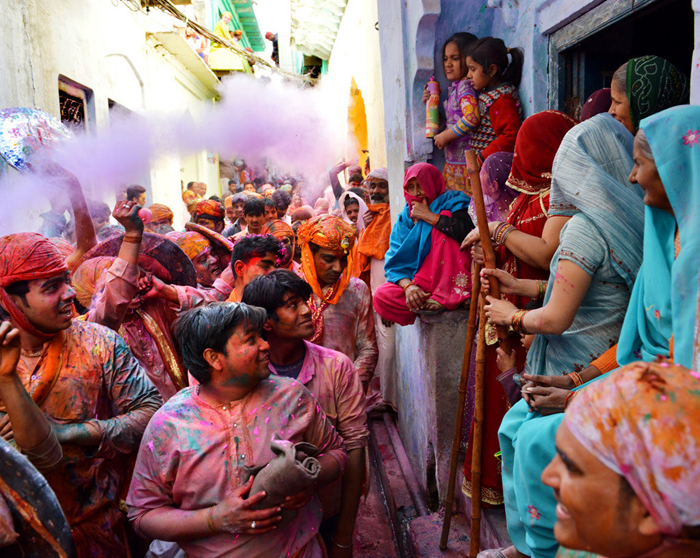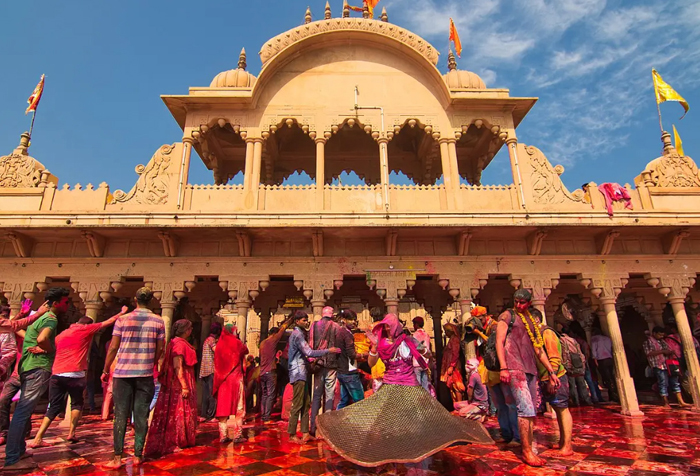"Dream, Dream, Dream! Conduct these dreams into thoughts, and then transform them into action."
- Dr. A. P. J. Abdul Kalam
"Dream, Dream, Dream! Conduct these dreams into thoughts, and then transform them into action."
- Dr. A. P. J. Abdul Kalam
21 Mar 2024
Holi, the Festival of Colors, is almost approaching. It occurs in the month of Phalguna on the 'Purnima Tithi'. It falls on March 25 this year. It is one of the most important holidays observed with great fanfare both in India and throughout the world. The largest festival on the Hindu calendar is Holi, after Diwali. Holi is an annual celebration of Lord Krishna and Radha's eternal love and unity, which is why their devotees gather at Krishna's birthplace. Various Holi customs are followed throughout the nation. Among these, the most well-known holiday is Braj Ki Holi, observed by people from Gokul, Mathura, and Vrindavan over ten days. Lathmar Holi celebrations include playing with gulaal, dancing, and singing in addition to playing with Lath. In addition, people make Gujiya and Thandai, a traditional milk beverage. This year, the festivities got underway on March 17 with Laddu Holi, a festival in Barsana where ladies threw laddoos at men in jest. The day after Laddu Holi is celebrated as Lathmar Holi by the people of Barsana.
Background, and Importance of Barsana's Lathmar Holi 2024:
Every year, the Lathmar Holi festival lasts for a week. This ceremony symbolizes Radha and Gopis beating Lord Krishna with sticks (lath). According to folklore, Krishna used to disturb Radha and her companions by coming to Barsana and Nandgaon. They beat him with sticks because he also smeared color over Radha and Gopis' cheeks. During Holi, a similar tradition is regularly carried out. Men come to Barsana to take part in this unique festivity from nearby places, especially Mathura. The women are teased by the males at this time, and in response, they beat them with sticks and try to put them out. Those who are caught are forced to change into women and dance in public. Nandgaon too follows the same tradition.

( Source: Google Images)
More Insights About this Auspicious Festive Days:
Laddu Holi is a well-known festival celebrated at the main Shreeji temple in Barsana, Mathura, one day before Lathmar Holi. In the Brij region, it has particular significance. The story of Laddu Holi, which is celebrated in Barsana, is that Panda, Radha-Rani's envoy from Barsana, travels to invite Lord Krishna's community to celebrate Holi. Panda comes to Barsana and tells her of this news after accepting Lord Krishna and his Gwal people's offer to play Holi. With delight, the people of Barsana toss laddus at the panda. Laddu Holi is now celebrated in Barsana one day ahead of Lathmar Holi. Everyone is greeted on this day with laddus. Laddus are flung from the Shreeji temple with great force. The eagerness of devotees to receive the laddus in the form of Prasad is evident.

( Source: Google Images)
Following the Laddu Holi, Radhadasi accepts Radharani's offer for Kanha to play Rangili Holi. For the last twelve years, Radhadasi, who resides in Vrindavan's Gopal Ghat, has been performing this activity. This work was passed down to Radhadasi by her mentor, Shyama Dasi. Radhadasi feels fortunate to be performing this work. When Radhadasi passed through the vibrant street carrying Bhog Prasad, Itra Phulel, and Paan Beeda along with a handi loaded with Abir Gulal, devotees flocked to meet her. Radhadasi are warmly welcomed by the Goswami Samaj at Nandgaon upon their arrival.

( Source: Google Images)

( Source: Google Images)
Renowned far and wide for its unique customs, Lathmar Rangili Holi captivates both locals and visitors alike every Falgun's Navami. As the afternoon sun casts its warm glow, the Hurriyares journey from Nandgaon to Priya Kund, where they're warmly welcomed by the Barsana community, eagerly anticipating the festivities. It's on this auspicious occasion that cold thandai infused with cannabis is served, adding an extra layer of euphoria to the atmosphere.
From here, Huriyare travels immediately to the Ladliji temple, where the Goswamis of Barsana and Nandgaon gather to sing in unison. Amidst the melodious tunes, good-natured banter ensues between the groups, adding to the jovial spirit of the occasion.
After the communal hymns, the Hurriyares proceed to Rangili Gali, where the air is charged with excitement. Here, Hurriyarin, armed with sticks, awaits their arrival, ready to engage in the playful yet spirited exchanges. The streets come alive as the Hurriyares and Hurriyarins playfully lather each other with colors, skillfully parrying lathi blows with their shields in a display of agile defense.
This vibrant spectacle draws thousands of onlookers, all eager to witness the breathtaking festivities unfold before their eyes, adding to the rich tapestry of traditions that define the essence of Lathmar Rangili Holi.
In Accordance To Mythological References~
The prankish Nandgaon native Kanhaiya would take his cowherds to Barsana in Dwaparyug, where they would play Holi with Radha Rani and other Gopis and taunt them. Jokingly, Radha raced behind Kanha and his cowherds and used a stick to teach him a lesson. In keeping with this custom, the men of Nandgaon and the ladies of Barsana play Lathmar Holi during the month of Phalgun each year. The men of Nandgaon use sticks tied around their waists, called huriyars, to play a vibrant version of Holi. A similar event is scheduled for Nandgaon the next day. The residents of Barsana and Nandgaon practice religion. This custom is claimed to have originated with ladies acting out the role of Radha Rani about 5,000 years ago.